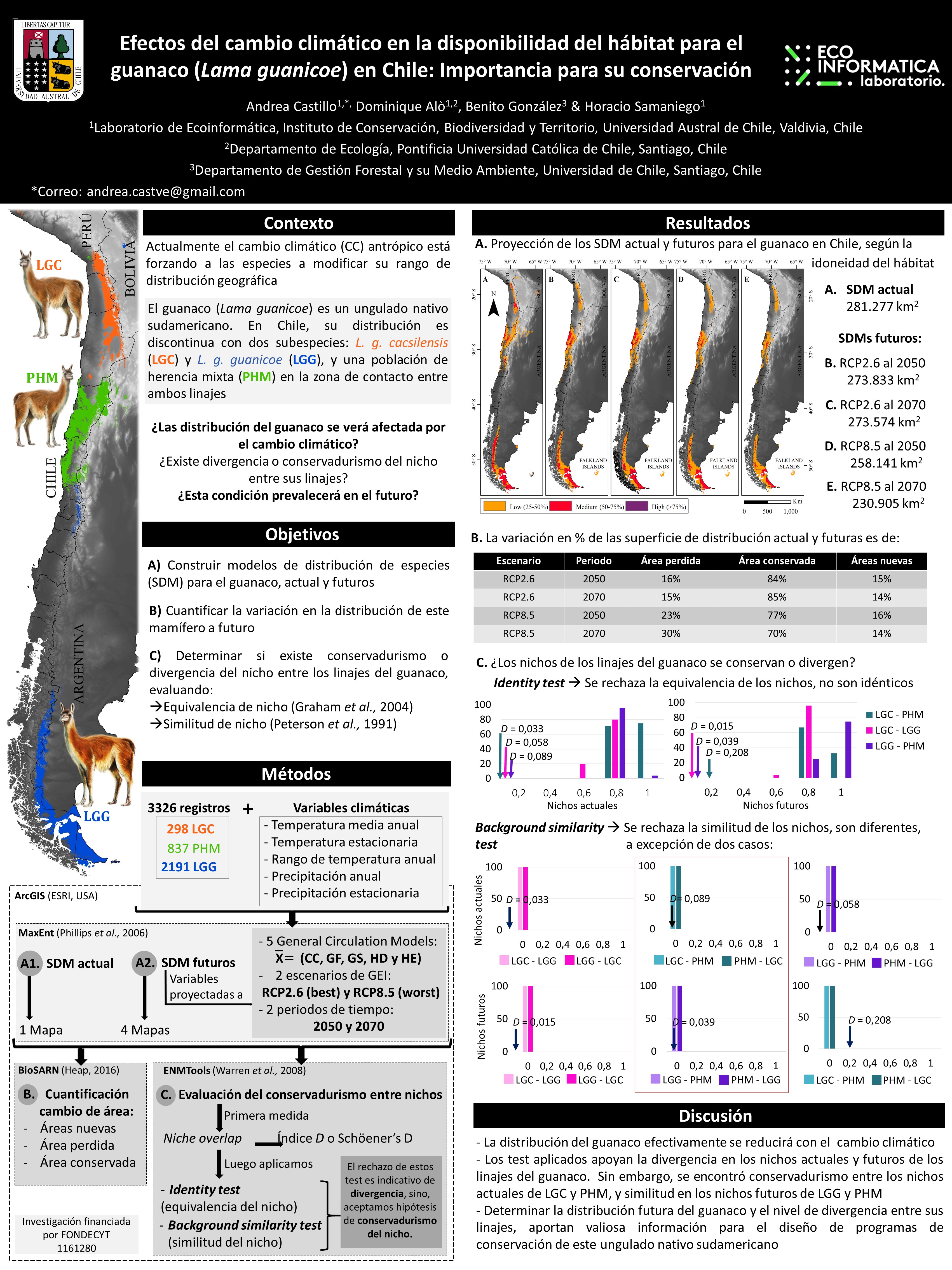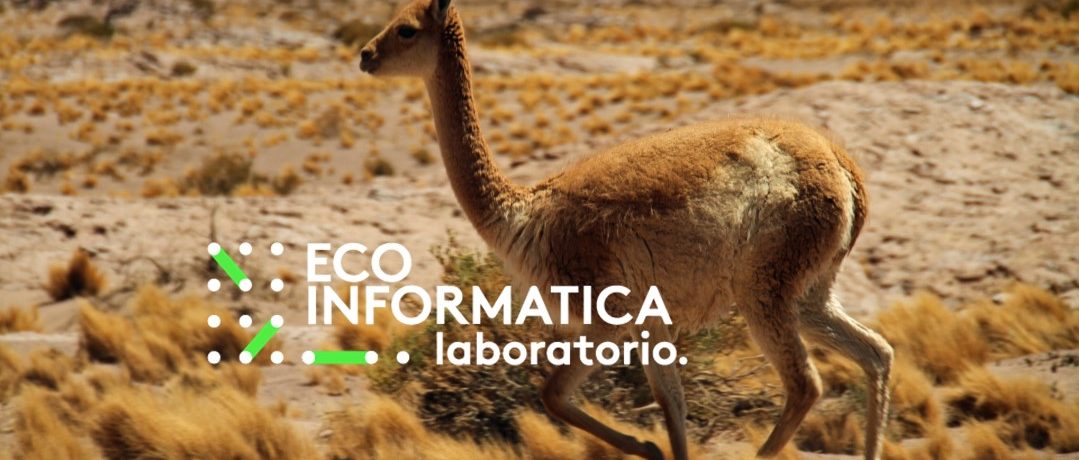Nueva publicación sobre SDM!
Andrea Castillo junto a Dominique Alò y Horacio Samaniego han enviado una nueva publicación para revisión de pares. Para leer el preprint ingresa aquí
Change of niche in guanaco (Lama guanicoe): The effects of climate change on habitat suitability and lineage conservatism in Chile
Abstract
Background. A fundamental problem in the biogeography of climate change is to understand and predict how environmental factors determine whether organisms will alter their seasonal activities, home ranges, migratory patterns, abundances, and interspecific interactions. The main goal of this contribution was to define the ecological niche of the guanaco (Lama guanicoe) to describe potential distributional changes and to assess the relative importance of niche conservatism and divergence processes among the two lineages described for the species.
Methods. We used current and future projections of climate change under two extreme GHG emission scenarios (RCP2.6 and RCP8.5) to evaluate changes of the environmental niche and future distribution of the largest mammal in the southern cone of South America. Evaluation of niche conservatism and divergence are based on identity and background similarity tests.
Results. We show that: a) the current geographic distribution of lineages and contact population prescribe different climatic requirements that are related to the geographic areas where these lineages are located; b) future distribution models predict a decrease in the distribution surface under both scenarios; c) the surface area predicted to be gained, lost, and unchanged is ~15%, 15- 26%, and 85- 75% respectively; d) a 3% increase of areal protection is expected if the current distribution of protected areas is maintained, however this is expected to occur at the expense of a large reduction of high quality habitats under the best scenario and; e) current and future distribution ranges of guanaco mostly adhere to phylogenetic niche divergence hypotheses between linages (L. g. cacsilensis and L. g. guanicoe). However, both lineages and the contact population show niche conservatism given niche similarity tests.
Discussion. Associating environmental variables to species ecological niche seem to be an important aspect of unveiling the particularities of, both, evolutionary patterns and ecological features that species face in a changing environment. We have provided specific descriptions of how such patterns may play out under the most extreme climate change predictions, thereby, providing a grim outlook of the future potential distribution of guanaco. From an ecological perspective, while a slightly larger distribution area is expected, this may come with an important reduction of available quality habitats. From the evolutionary perspective, we describe the limitations of the contact population´s niche to merge with the northern and/or southern niche lineages of guanaco exposing the complexities of understanding evolutionary patterns across this taxon as it experiences climate change dynamics.

